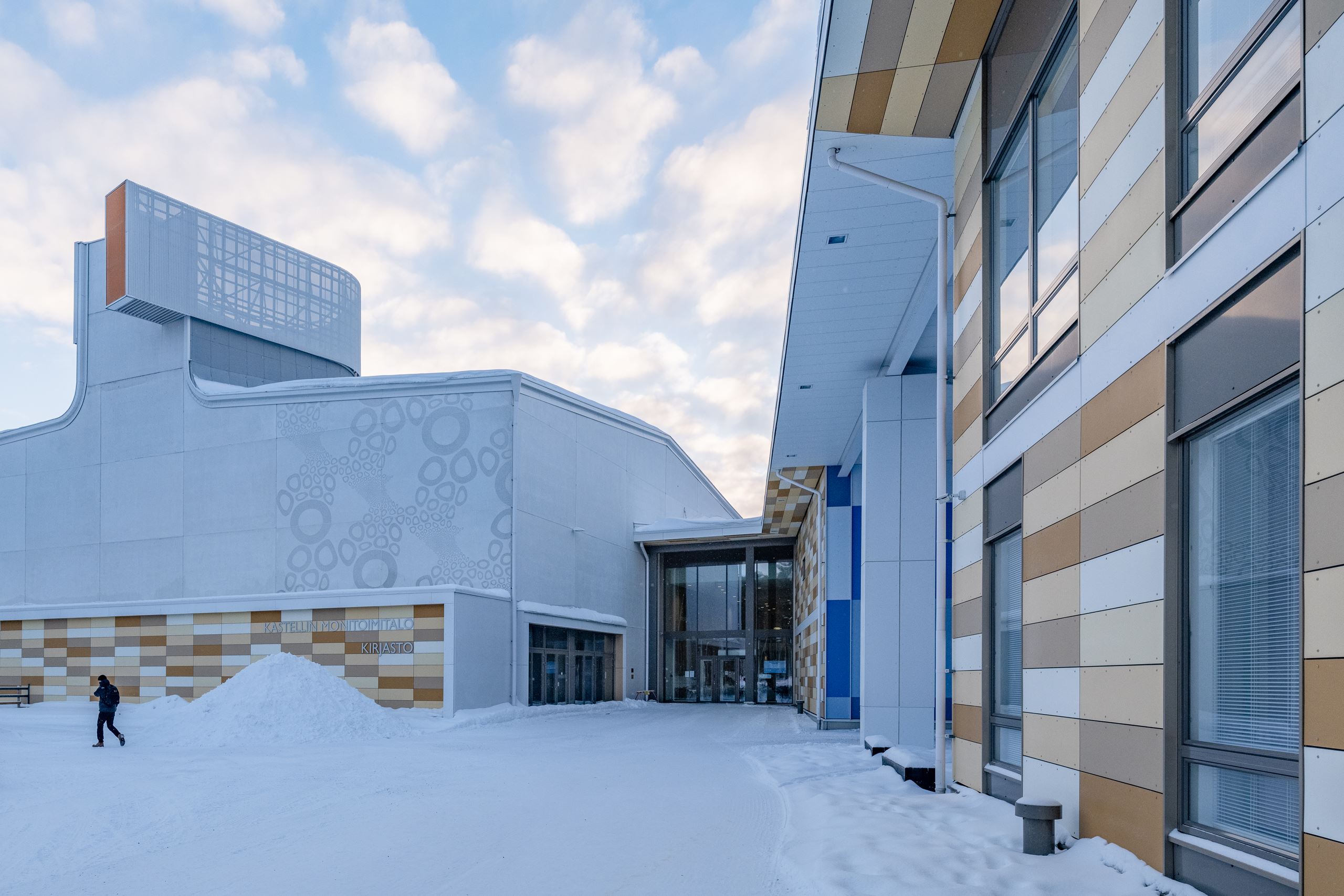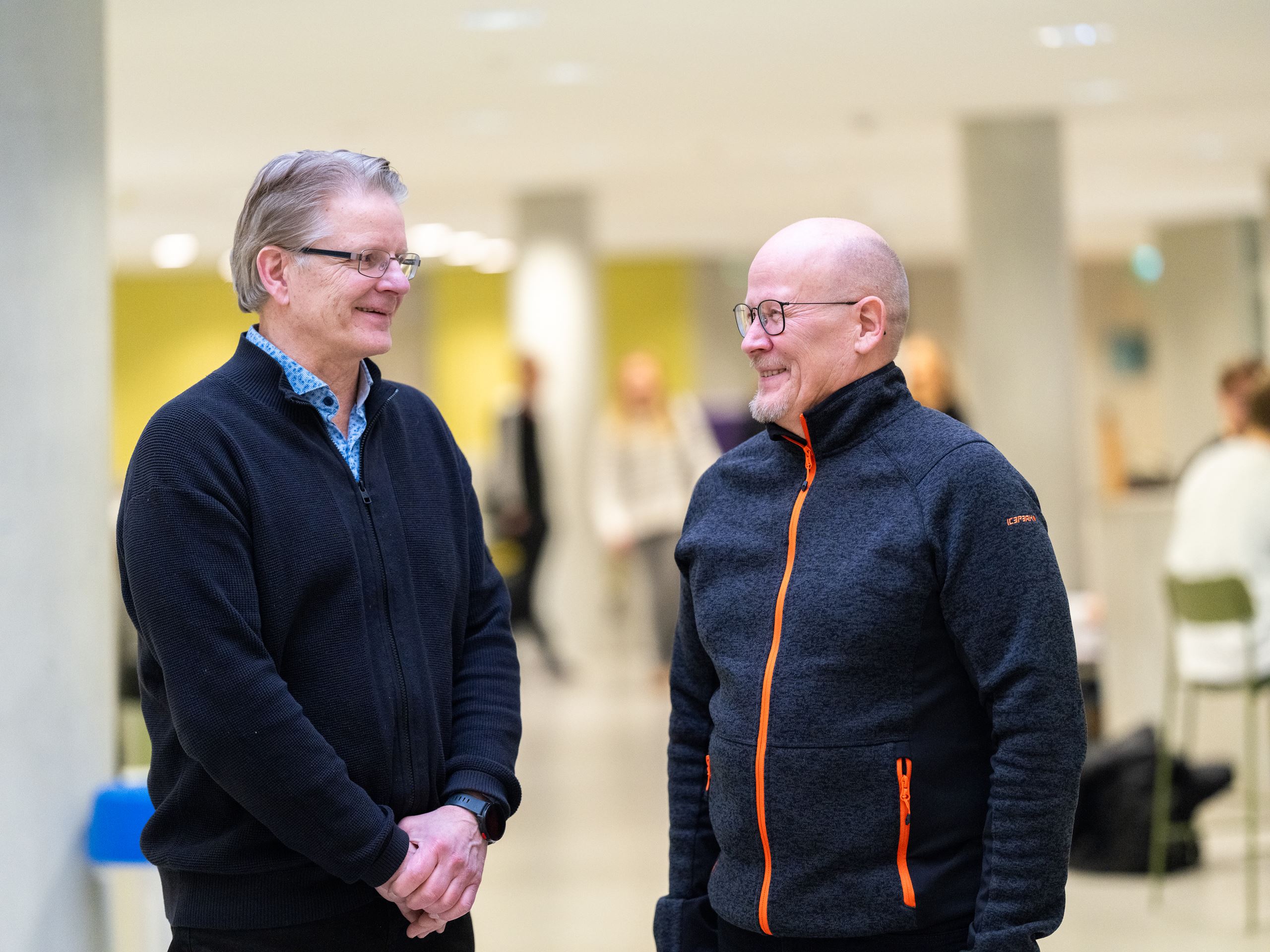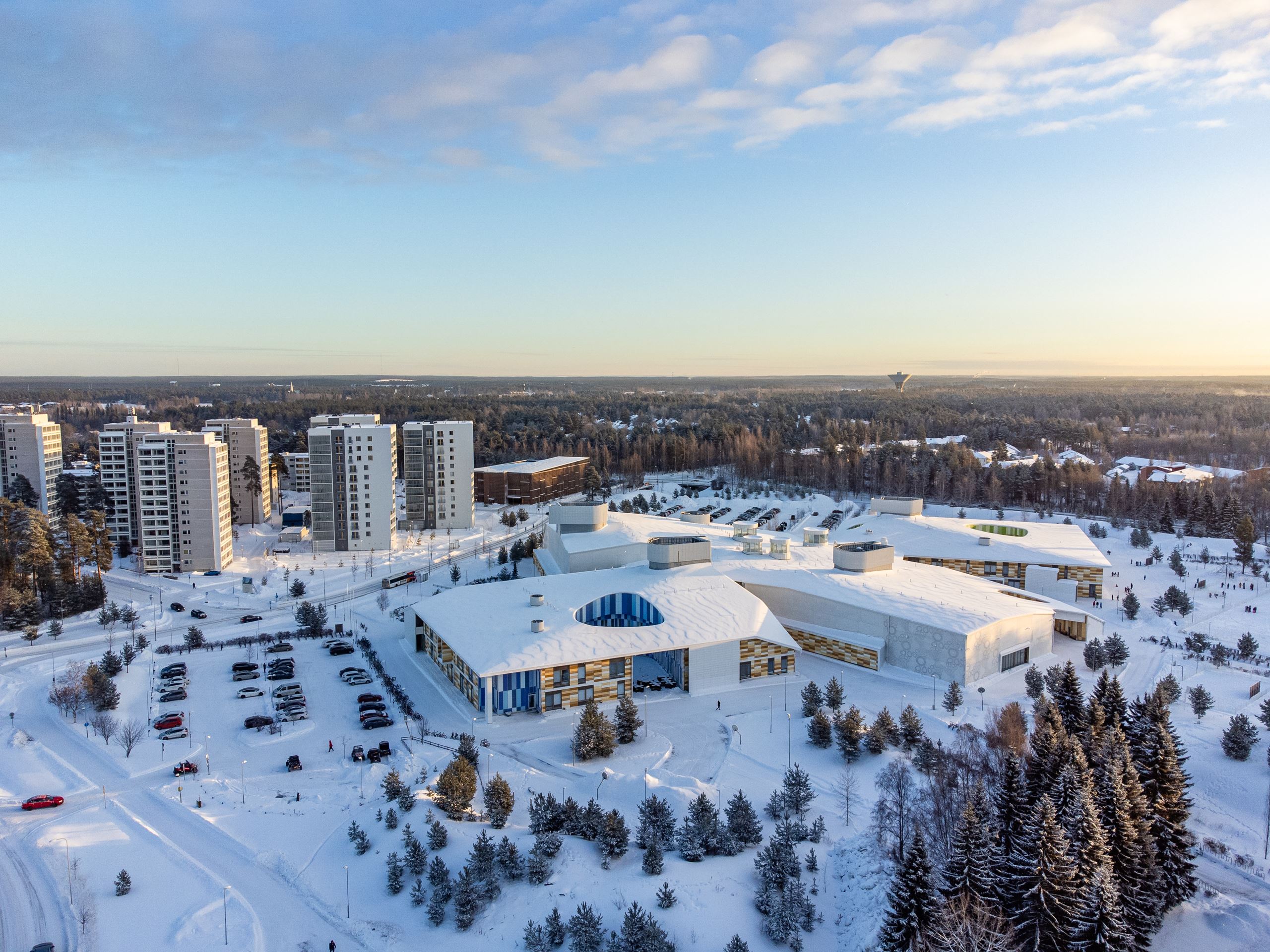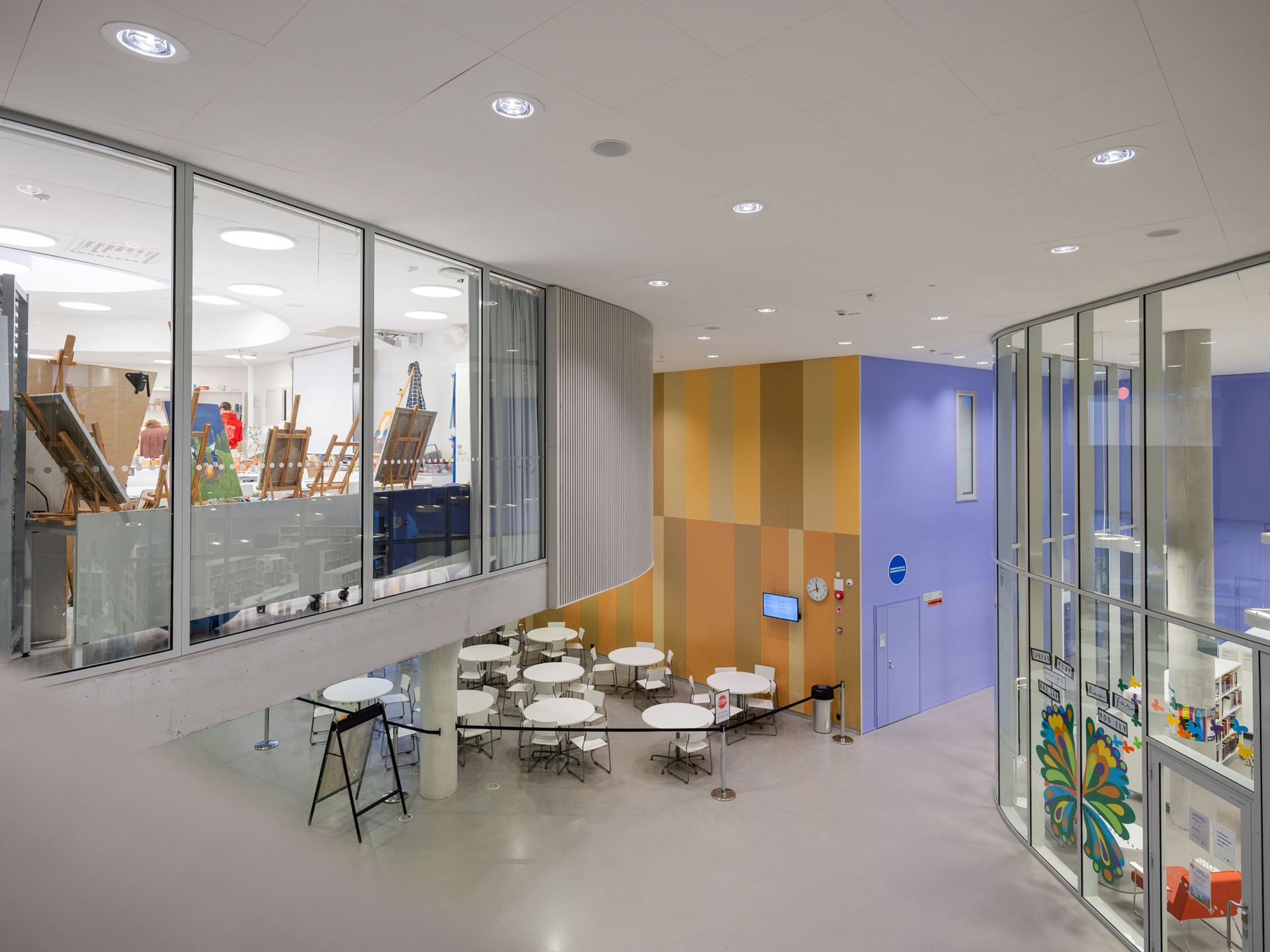New facilities for industrial and logistics companies in the best location in Tuusula
The Kastelli community centre is a learning, leisure and cultural centre owned and run by the City of Oulu. It was built as a life cycle project. With YIT taking responsibility for the management and maintenance of the building, facility users are free to concentrate on their studies and leisure activities.
The Kastelli community centre in Oulu’s Kontinkangas district was completed in 2014. It replaced the old school building, which except for the former Oulunsuu primary school was demolished. The contract included the demolition of the existing buildings, the design and construction of the new multipurpose building, and the provision of building management, maintenance and user services.
From the outset, the design and construction of the Kastelli multipurpose building focused on creating a long-term, safe and adaptable space that serves city-dwellers now and in the future. For this reason, the City of Oulu decided on a life cycle model for the project.
“The choice of project implementation method was influenced by the fact that Finland had already successfully built schools and daycare centres with a life cycle model at that time. It allows all the services needed for the building to be obtained from a single long-term partner, preventing the accumulation of a maintenance backlog for the property,” explains Timo Salmi, the director of the Kastelli community centre.

YIT is in charge of the management, maintenance, user services and basic renovation investments of the Kastelli multipurpose community centre during the 25-year service period. Over the past ten years, the common practices have been honed to promote and anticipate high-quality and comprehensive building maintenance.
Veijo Kotilainen, real estate manager at the Property and Facilities Management Services of Oulu, says that the life cycle model of the Kastelli multipurpose building has met the expectations set for it. The approach has been forward-looking, keeping the facilities in good condition and avoiding unpredictable costs for the City of Oulu.
“The team regularly monitors the day-to-day running of the building and makes changes where necessary to improve the user experience. For instance, over the past ten years the acoustic properties of the sports facilities have been improved,” Kotilainen says.
The students and staff of Kastelli school are satisfied with the modern learning environment, its maintenance and services. This is reflected in the regular wellbeing and learning environment surveys that are conducted, in which Kastelli is evaluated as above average.
“There were some initial doubts about the life cycle model, but they proved to be unfounded. We have learned clear ways of working and got rid of rigid decision making. Both parties have a genuine desire to work together and continually develop the wellbeing of the property and its users,” says Salmi.

In the picture from left to right real estate manager at the Property and Facilities Management Services of Oulu Veijo Kotilainen and the director of the Kastelli community centre Timo Salmi.
With a total area of around 23,000 m2, the building houses a wide range of activities. In addition to the daycare centre, after-school care, primary school, upper secondary school and adult education centre, it houses a library, youth facilities, an auditorium and extensive sports facilities. A large, multi-use life cycle building places heavy demands on its ventilation system, which is customised to accommodate varying numbers of people.
The City of Oulu is aiming to be carbon-neutral by 2035. With this goal in mind, the development and maintenance of the Kastelli multipurpose building will take into account not only the functionality and safety of the facilities but also environmental considerations.
“For example, we use automated lighting and LED lights, we monitor and strive to minimise the building’s carbon dioxide emissions, and we use environmentally friendly district heating,” Kotilainen says.
Salmi and Kotilainen believe that the life cycle project has been well executed, which is not something that can be taken for granted in projects of this size. Bringing the activities of seven services and six employers under one roof has required long-term collaboration between the different parties. The life cycle model has provided a strong foundation for action, which will be used to continue the development of the Kastelli multipurpose building in the future.
“The life cycle model has made life easier for us, and as the manager of a multipurpose building for 2,300 children, pupils and students, I’m grateful for this,” Salmi says. “A well-functioning building feeds into the entire school culture, which promotes learning and the wellbeing of students and staff.”

